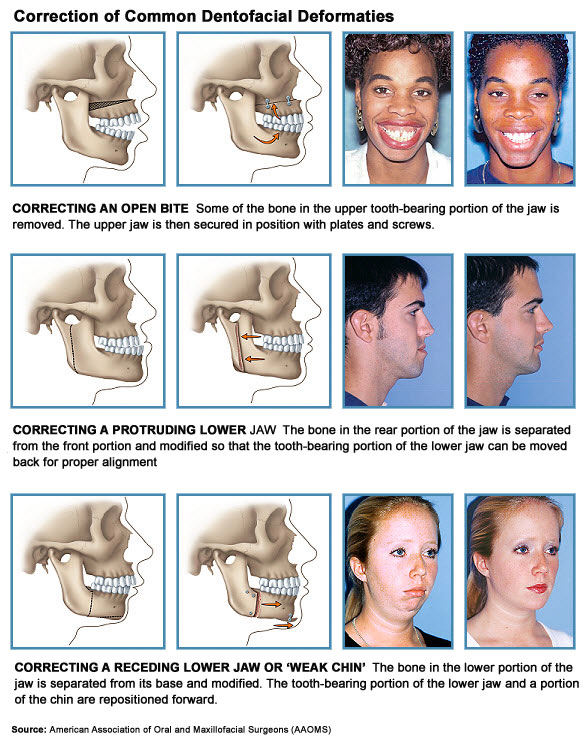Orthodontic Surgery Solutions in Langley
At Langley Orthodontics, we offer orthodontic surgery treatment to correct jaw irregularities, improve facial symmetry, and improve the patient's the ability to speak, breathe, and eat.
The Benefits of Orthodontic Surgery
For many patients, the main goal of orthodontic (orthognathic) surgery is to achieve a healthy and visually appealing smile. This innovative procedure not only focuses on enhancing jaw alignment and facial aesthetics but also provides numerous hidden benefits that may improve an individual’s overall quality of life. Orthodontic surgery at our clinic in Langley can address malocclusions and jaw abnormalities, allowing for improved chewing ability, clearer speech, and a more confident smile.
At Langley Orthodontics, our goal is to create facial balance and harmony between soft and hard tissue, both for the sake of our patient's appearance and their comfort. Of course, straightening teeth is an important part of our work, but we also consider the effect on the overall appearance of each patient during every stage of treatment.
About Jaw (Orthognathic) Surgery
Orthodontic surgery aligns the jaws, making oral hygiene easier, reducing the risk of dental issues, and ensuring proper tooth alignment.
By correcting the underlying jaw alignment, orthodontic surgery improves oral hygiene and addresses issues like overcrowding, open bites, and crossbites. This results in a more stable and functional bite. In many cases, an additional benefit of these corrections is the improvement of the patient's facial appearance.
If you have jaw problems that can't be resolved with orthodontics alone, this corrective jaw surgery may be a viable option.
In most cases, this orthodontic surgery treatment process requires the patient to wear regular braces before surgery and during recovery after surgery until healing and alignment are complete.
-
Who is a candidate for surgical orthodontics?
Surgical orthodontic treatments are for adult patients who have bite problems, and for people with concerns about facial aesthetics, whose jaws are no longer growing.
For girls, jaw growth is usually complete by the age of 16, and for boys, at 18.
The jaw must be finished growing before orthodontic surgery can be performed. Pre-surgical tooth movements, however, can begin a year or two prior.
-
What takes place during surgery?
Your orthodontic surgery will be performed in the hospital. Depending on the type of oral surgery you need, it can take several hours.
In lower jaw surgery, the jawbone is separated behind the teeth and the tooth-bearing portion of the jaw is moved either forward or backward.
During upper jaw surgery, the jaw may be repositioned forward or backward, or else raised or lowered. Some movements might require the jaws to be separated, and bone added or removed to achieve stability and proper alignment. Other facial bones that contribute to alignment may also need to be augmented or repositioned.
-
How does surgical orthodontics work?
Orthodontic treatment, which is typically 6-18 months in duration, begins first. During this time, patients wear their braces and visit the orthodontist for regular adjustment appointments.
Many patients feel as though their bite is getting worse instead of better as their braces treatment progresses. After the jaws are properly aligned via orthognathic surgery, however, the teeth should fit comfortably into their correct, planned positions.
-
What does surgical orthodontics involve?
Surgical orthodontics (or 'orthognathic surgery') helps to improve the patients ability to breathe, eat and speak by correcting jaw irregularities. It can also improves the patient's facial symmetry and aesthetics.
Since moving the jaws also moves the teeth, braces are always a part of jaw correction surgery.
Braces ensure that the teeth are properly positioned after dental surgery.
-
How long does recovery take?
You'll likely be able to return to work or school after about two weeks of recovery time. After your healing time is complete (about 4-8 weeks), your orthodontist will "fine-tune" your bite.
In the majority of cases, the braces are removed about 6 to 12 months after surgery. Once your braces have been removed, you'll wear a retainer in order to maintain your beautiful new smile.

